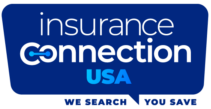Homeowner’s insurance is a type of property insurance, which means that it affords financial compensation to owners for loss or damages to their property. The insurance company reimburses the individual for monetary losses from theft, damage to the property (such as vandalism or fires), damage from natural disasters, etc. When it comes to natural disasters, tornadoes and hurricanes are typically included in standard policies. Some homes in certain areas may require special flood or earthquake riders.
In general, homeowner’s insurance covers the items inside and outside the home under the policy. While the normal wear and tear of the exterior of a home are not covered, but a policy normally would cover something like repairing a roof after a hail storm. The benefit of homeowner’s insurance is that all the homeowner pays is a deductible as listed in the policy and the insurance company pays for the remaining cost of repairs.
When selecting a policy, the policyholder can protect themselves, their assets, and even establish provisions to help them with potential liabilities regarding personal injuries, if a mere accident happens on their property, and it requires medical care. Homeowner’s insurance saves homeowners money, stress, and anxiety by addressing the worst-case scenario and insuring against it.
What is the best type of homeowners insurance policy?
Homeowner’s insurance can be a complicated concept since there are 8 different policies (HO-1 to HO-8). Most people end up choosing the HO-3 or HO-5 policy since the other ones mostly include unique exemptions and other clauses that the typical homeowner does not need to address. The HO-3 policy is considered the standard for homeowners and the HO-5 is more like the premium version of the HO-3.
The HO-3 standard policy protects both the inside and outside of structures on the property. It also includes some liability insurance to cover accidents that may happen on the property. It covers damages to belongings, such as cleaning, repairing, or replacing damaged items after a storm or fire. The nice thing about an HO-3 policy is that it often covers outside structures on a property, such as a fence, garage, or shed that could also be destroyed in a storm or incident. A common distributor of an HO-3 policy would be something like Allstate Insurance. In contrast, Chub and Openly Insurance are known for selling HO-5 policies.
People can run into trouble attempting to prove that damaged personal property in the home was damaged by the same force that damaged items outside. With an HO-5 policy, a customer can basically itemize the property inside, and it would automatically be covered, as long as the cause of the damage is included in the policy.
Ho-3 policies can be endorsed to include most coverage that is standard with the HO-5, it is a good idea to ask your agent to explain the included coverage’s and also moreover, to explain what is excluded in a Homeowners policy.
Contact Insurance Connection USA at 940-382-4700 for more information.
